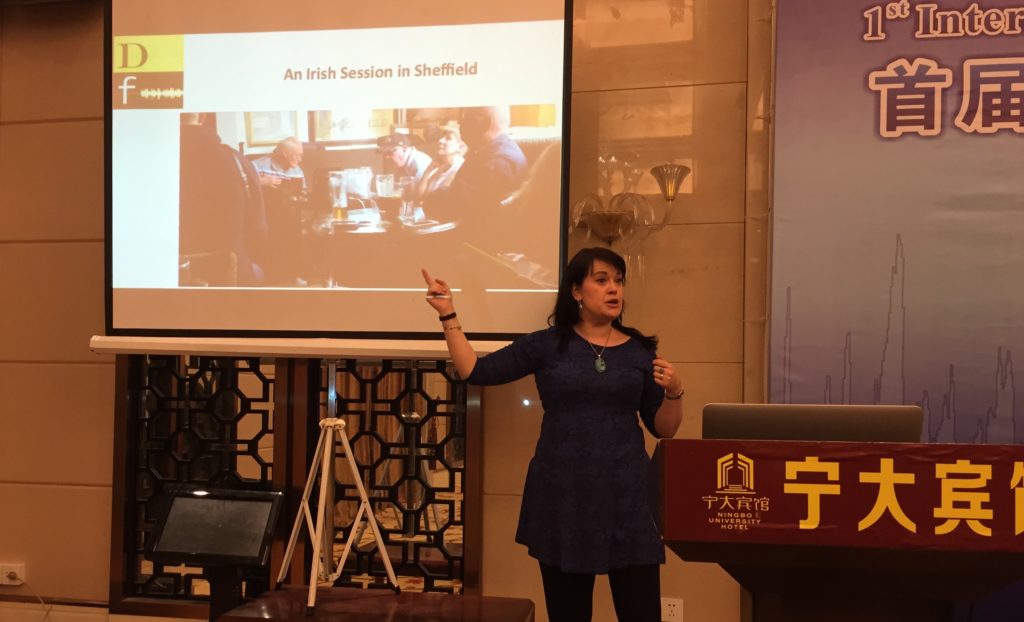
Cinzia talking to Ningbo University about Digital Folk
“How do you fancy going to China?” was not what I had expected Simon to say as we were on the train to our launch event in London at the beginning of April, but I wasn’t going to dismiss the idea out of hand… and a good job too! Despite the short call (three weeks!) and the need for speedy visas and transport bookings and possible medical issues (“Do I need a typhoid jab?” “Just try not to get any river water in your mouth, you’ll be fine…”) we arranged it all and I was off to Ningbo in China.
The 1st International Forum for Digital Musicology was to be hosted at the College of Arts, Ningbo University and was the brainchild of Professor Yu Hui, a musicologist specialising in guqin and Chinese opera, with a long standing interest in digital musicology. With a sense that musicology in China was falling behind the curve in developments in digital humanities and music, Prof. Yu was keen to kick off the International Forum for Digital Musicology even if it was at short notice.
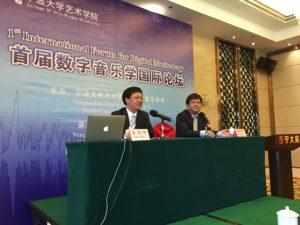
Professor Yu and the President of Ningbo University opened proceedings
The day-long symposium had a variety of international and Chinese speakers. Professor Elaine Chew had travelled from the Centre for Digital Music at Queen Mary’s University, London, to give two detailed and informative papers about digital visualisation tools that can be used to identify ‘borrowed’ elements of music in separate pieces and also the use of digital tools in musician centred problem solving necessary in musicology. Also visiting was Dr. Matt Gillan. Originally hailing from Oxford, Matt is now Senior Associate Professor of music at International Christian University in Tokyo and he attended to speak on how the Sonic Visualiser software (developed by the Centre for Digital Music at QMUL) had shed new light on the true meaning of manuscript instructions in Okinawan uta-sanshin music. Unfortunately the fourth visiting scholar, Johnathan Stock from University College Cork and formerly of University of Sheffield, was unable to attend at the last minute.
Other papers from speakers from around China included discussion on acoustic libraries for traditional instruments, digital analysis of music manuscripts and codicology, online music visualisation platforms (Vmus.net) and the importance of big data and micro-analysis in ethnomusicology.
A paper introducing the theoretical framework and methodology for Digital Folk was written between Simon and myself, and I spoke between Elaine and Matthew as visiting speakers. The room was packed with 30-40 academics and students all interested in digital musicology, but it soon became apparent that many of the social media platforms that folk musicians in England rely on, such as Facebook and Twitter, are restricted in China and so made it difficult to relate to some of the younger members of the audience. That being said the paper was well received and sparked some interesting debate later over dinner (luckily I do know how to use chopsticks!). In particular our project stood out among the others as we were concerned primarily with the tools and resources used by musicians themselves, rather than what digital tools can do for (ethno)musicologists. It was clear that through this small event the notion of ‘digital musicology’ had been challenged and widened.
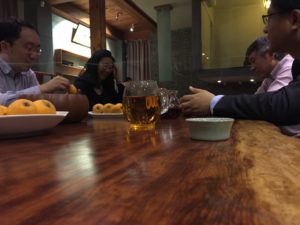
Tibetan tea in a teahouse
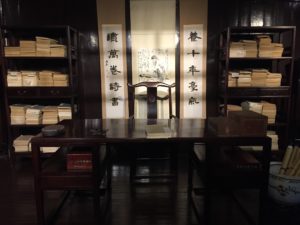
Tian Yi Ge Library
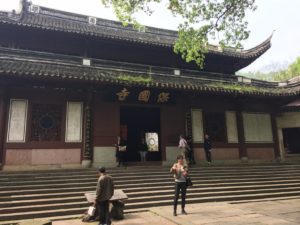
Temple of King Ayu
It wasn’t all hard work though. As well as being treated wonderfully, being put up in deluxe rooms in the University Hotel and fed some excellent local cuisine we were also taken on a number of sightseeing trips. First up was a beautiful local tea-house run by a Ningbo University academic, where we sampled Tibetan tea and were calmed by rare agarwood incense. We were also taken to the beautiful Tian Yi Ge Library Gardens where we saw the grounds and building of the oldest library in China, built during the Ming dynasty (c. 1560). We were also taken to the beautiful Temple of King Ayu. Originally built in 282 A.D. it is one of the five famous mountain temples in Chinese Zen tradition, although it was almost lost to the undergrowth until it was re-discovered in the 1950s. Finally, we visited the Old Nantang District, a reconstructed area built to reflect traditional Ningbo life and food.
In total I was in Ningbo for less than 72 hours, but it was a wonderful experience, packed full of Chinese culture and digital musicology. We have made some important connections in relation to digital tools used in other musics and look forward to watching the Forum for Digital Musicology grow over the coming years!
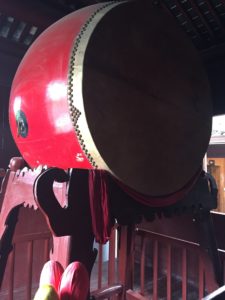
Monk’s Drum
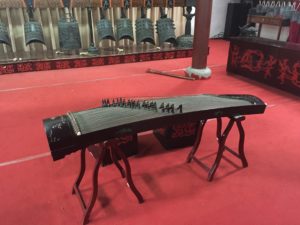
Boazhang, Boaqing and Qin









